Ground cover plants, an alternative to lawn
Ground cover plants provide compact plant cover due to their density. The land is covered with sometimes flowering vegetation. Often ground cover plants are used to replace grass for issues of establishment and maintenance, embankments or undergrowth. The idea of an eco-responsible garden would be to amplify this habit, that is to say not to reserve ground covers only for places that are difficult to access or present maintenance difficulties, such as mowing on the ground. steep.
Ground cover plants VS lawn.
Grass is a relatively level, green surface that you can walk on. Nevertheless, it requires careful maintenance, because nothing is more ugly than a peeling lawn, yellow during high heat or winter cold.
It is also an offense to ecology, to nature, as the needs for water and fertilizers are intense, with for the second parameter, an almost inevitable pollution of the soil and groundwater. Especially if the spreading of chemical fertilizer is combined with selective weedkillers. Golf courses are a glaring example, even if a real awareness is affecting lawn and green maintenance teams.
Even if we select grasses that are more resistant and have an appreciable aesthetic appearance, maintenance will still be important.
Watering, fertilization, scarification, aeration, mowing, and phytosanitary care do not simplify the gardener's life.
Ground cover plants, once established, do not require, for the most part, specific and regular maintenance. Sometimes a small cut or a watering if necessary, but nothing compared to the hours of mowing and watering.
Without wanting to completely remove the lawn from gardens, ground cover plants can advantageously replace grassy surfaces. Here are some ground cover perennials. Nevertheless, shrubs and conifers can also be used as ground cover.
What ground covers to use?
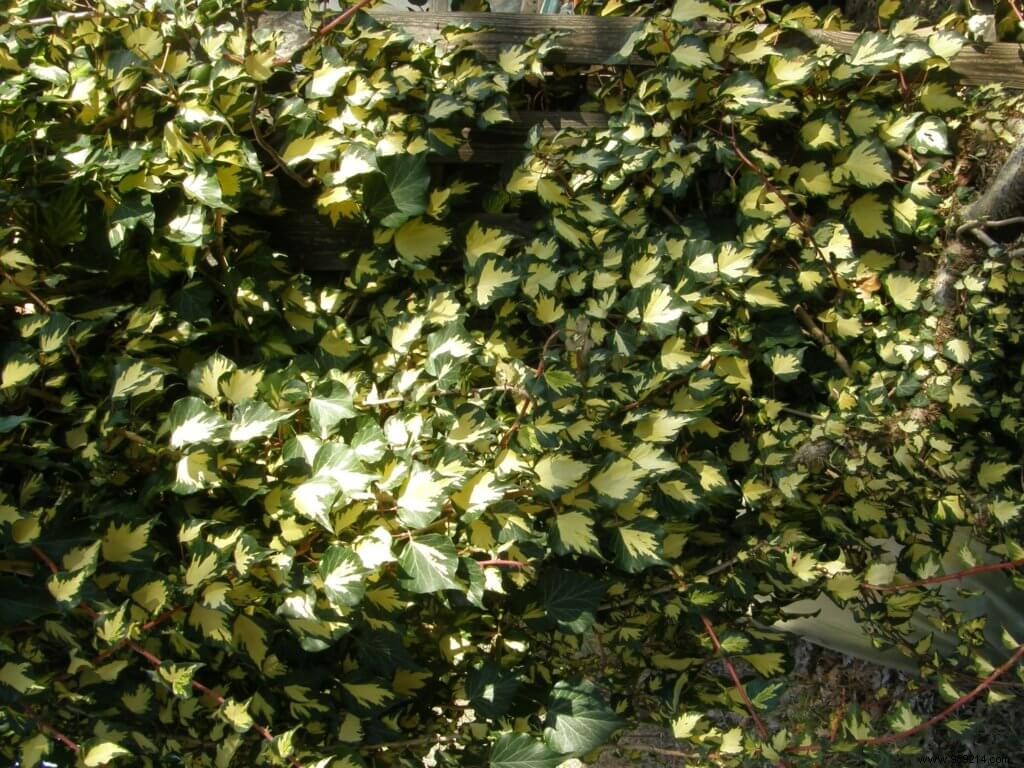
Small-leaved variegated ivy. ivies are great ground covers
- Ivies (Hedera helix). There must be close to fifty different varieties. Small leaves, large leaves, green or variegated, for shade or full sun, fast or slow growing, an ivy for every situation and desire. In addition, their flowering provides pollen and nectar to the bees if they are not pruned at the end of summer.
- The Crawling Bugle (Ajuga reptens). Its foliage is evergreen, its flowering in bluish spikes attracts a few foragers in the spring. This perennial grows up to 10 cm in height, and even thrives under pine trees.
- Perennial Purslane (Delosperma). A 10 cm high carpet of pink flowers, to be placed in full sun. However, the plant resists minus 18°C! Very resistant to dryness.
The delicious one:
- The wild strawberry (Fragaria vesca). A fruitful ground cover! However, the wild strawberry does not like excess water or too much dryness.
the flowers:
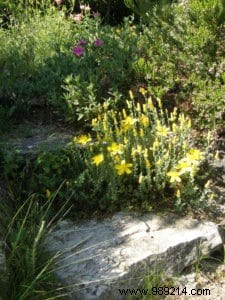
hypericum olympicum (St. John's wort)
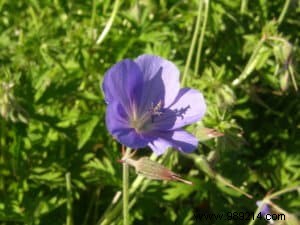
Perennial geranium, one of the ground cover plants
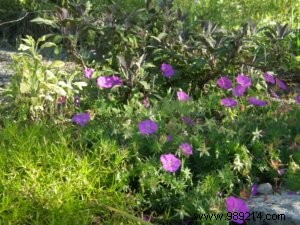
Perennial geranium, one of the ground cover plants
- Perennial Geraniums. With their summer flowering, pink, red, blue, white, the perennial and evergreen Geraniums make magnificent beds 15 to 50 cm high.
- St. John's Wort (Hypericum). We know Hypericum calicinum, well. which has long been used without many competitors. Unfortunately, this St. John's wort very quickly suffers from rust, which ravages its foliage. His little brother Olympicum does not have this drawback. Smaller leaves and flowers, but a real carpet of yellow in summer.
- The Pachysandra . Intended for the shade, in not too dry places where it does wonders. Superb cover with pretty shiny green foliage 20 cm high. Insignificant flowering.
the rapids:
- The Veronicas (Veronica). Champions of establishment, especially in the sun in not very fertile soils, the Veroniques enchant with their green foliage all year round. Coverage 5 to 10 cm high. Sky blue flowers in early summer.
- The Periwinkles (Vina). Small bluish-white or purple-red flower on green or variegated foliage, with large or small leaves, periwinkles thrive in the sun or in the shade depending on the variety.
- The Erigeron (Erigeron karvinskianus). Small flower like a daisy but good colonizer, especially from seed.
And to continue reading, go to the article on creating a bed of perennials
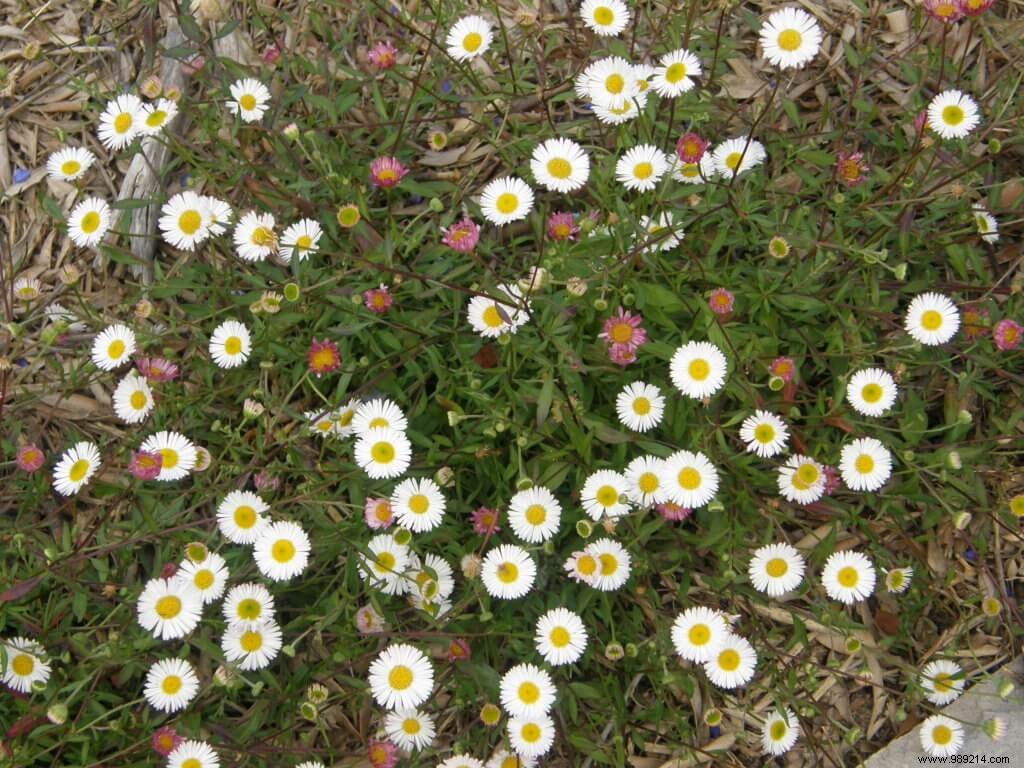
erigeron-karvinskianus




